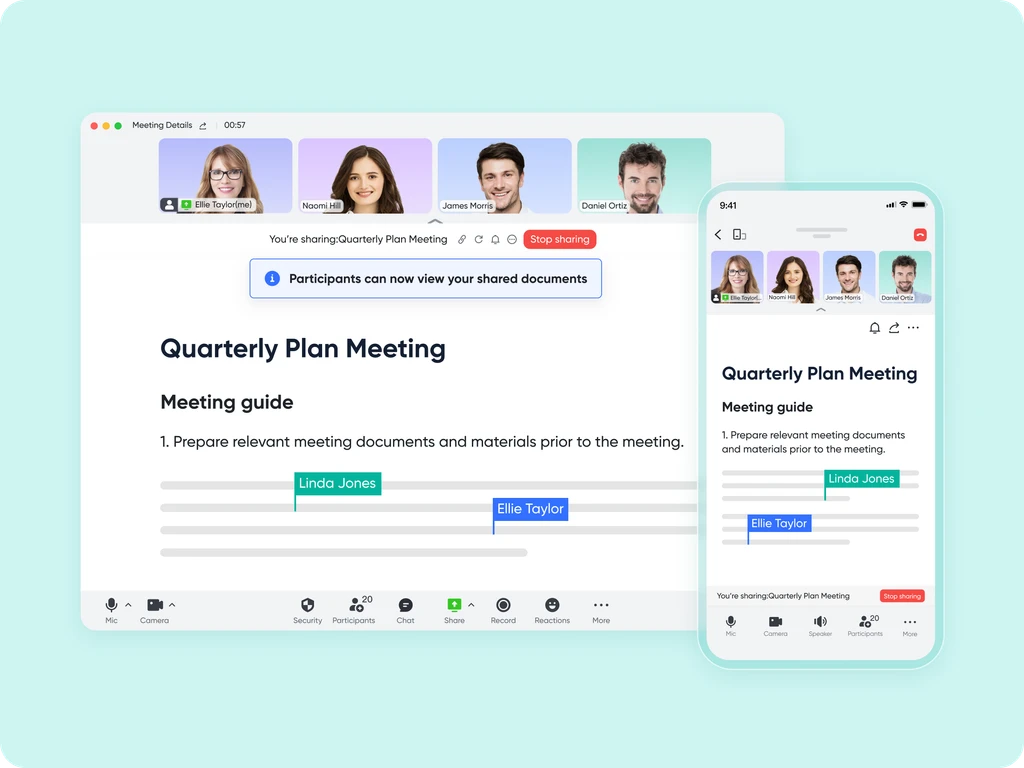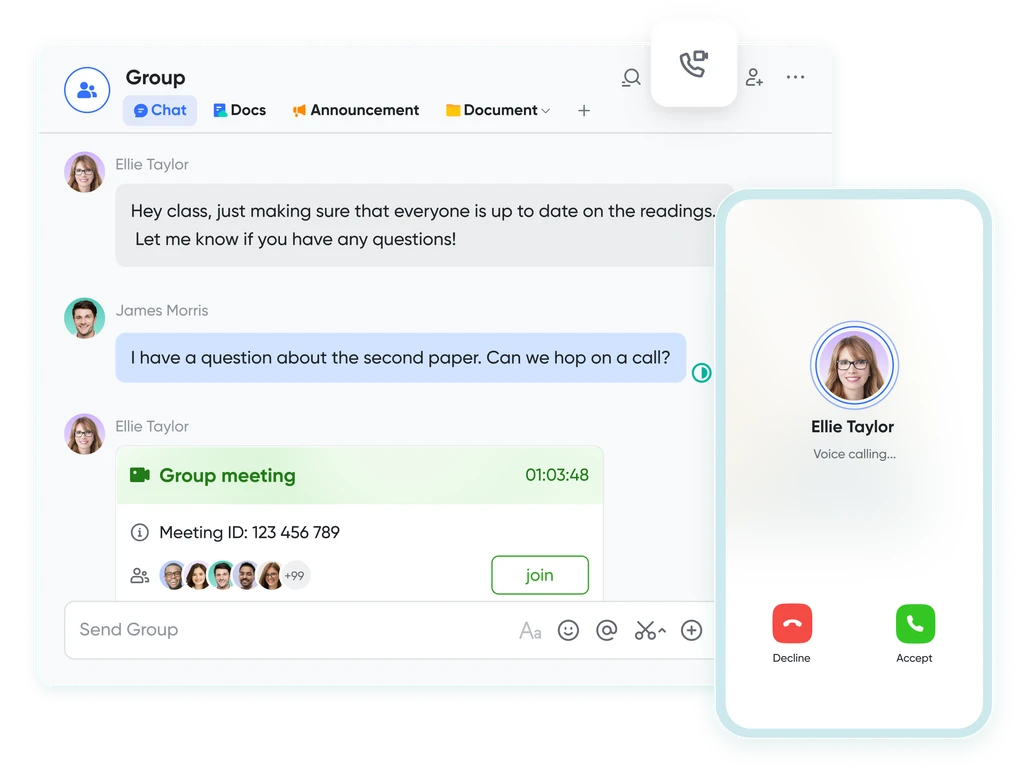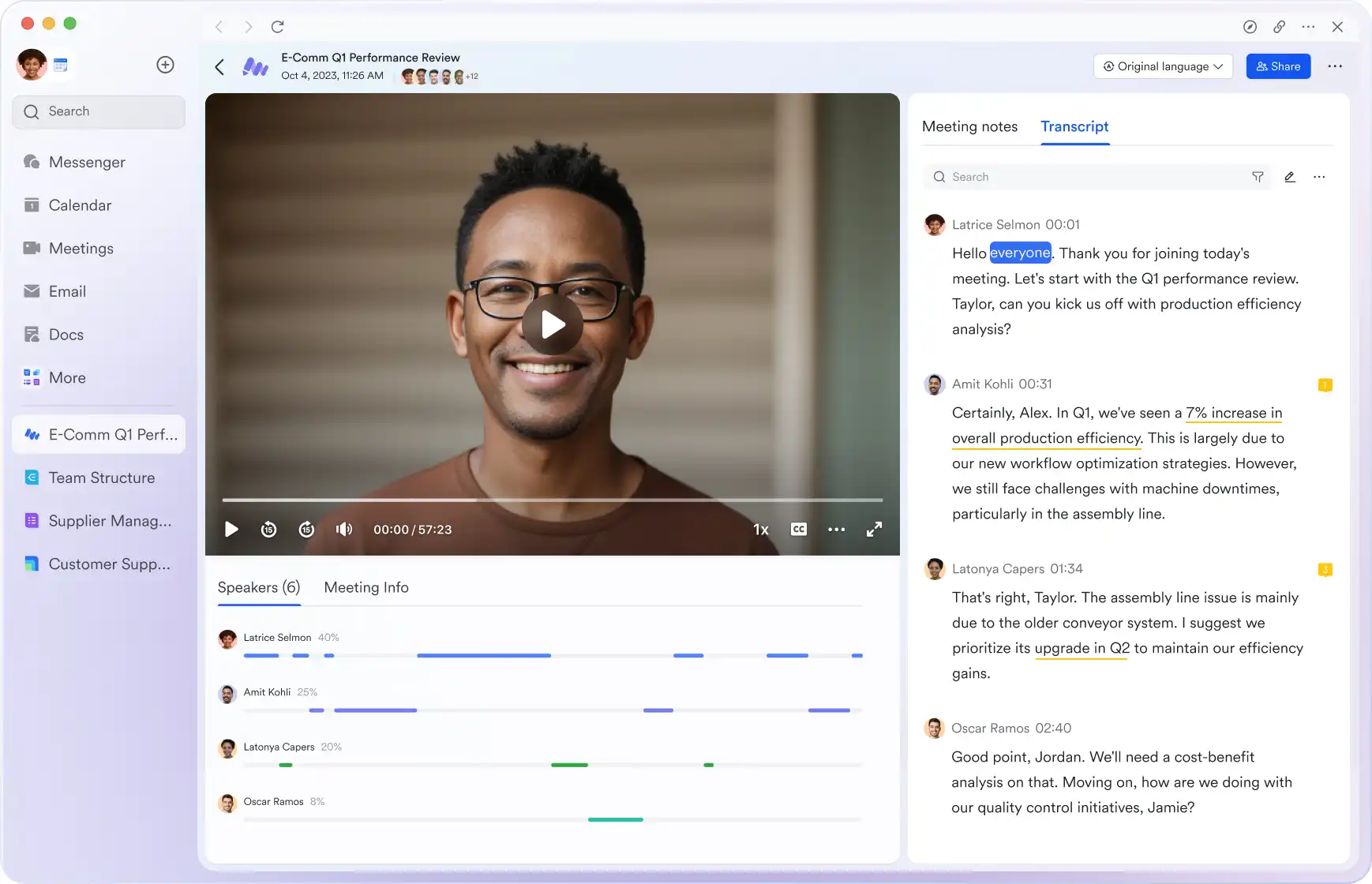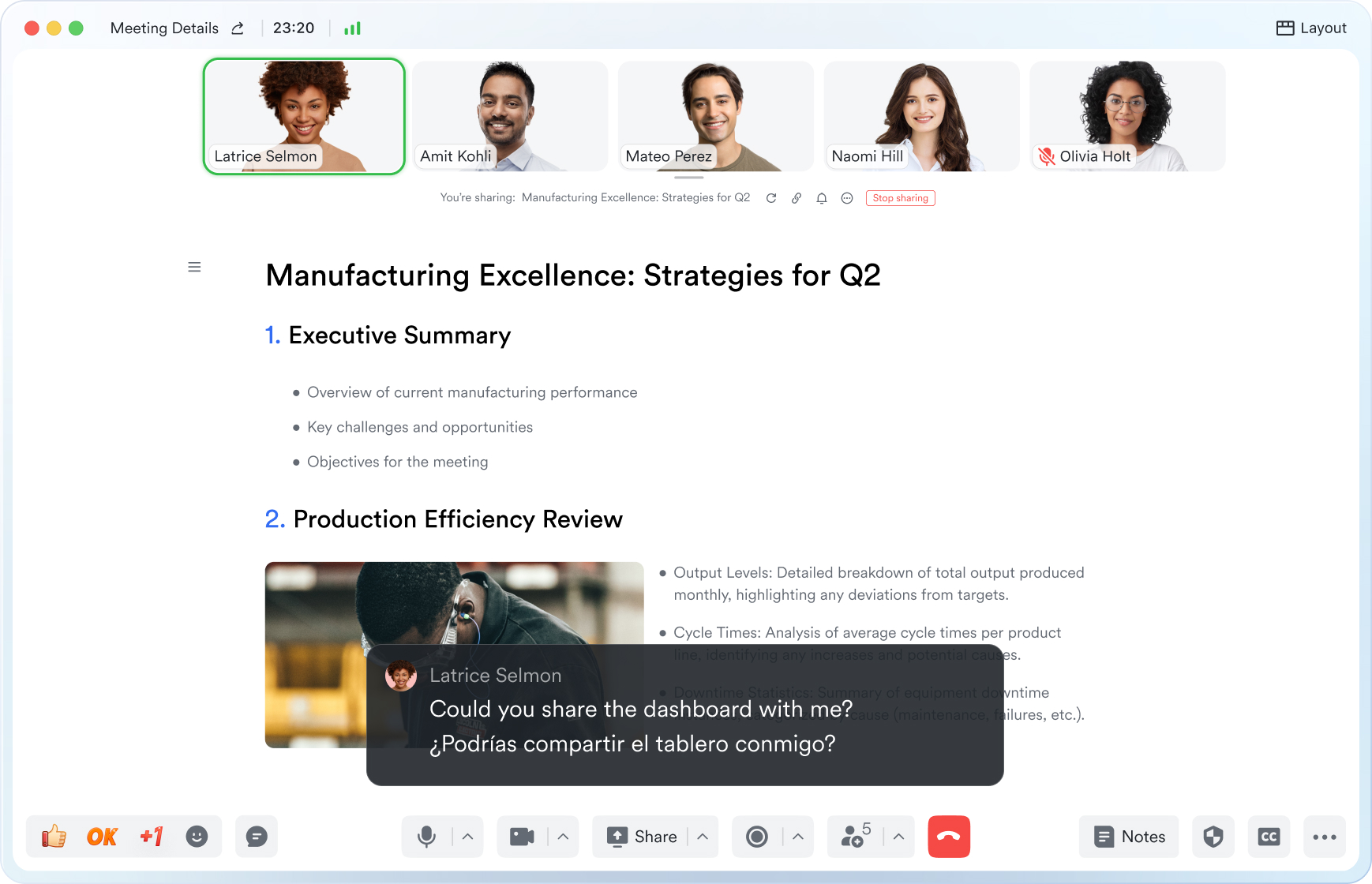Introductory Meeting
This guide will walk you through the essential elements of use introductory meeting to keep your attendees aligned and engaged.
Try Lark for Free
Introductory meetings play a pivotal role in establishing connections, setting expectations, and building relationships in both personal and professional contexts. Whether it's meeting a new colleague, client, or partner, the way you conduct introductory meetings can leave a lasting impression. In this comprehensive guide, we'll explore the significance of introductory meetings, how to prepare for them effectively, and best practices for making the most of these critical interactions.
Use Lark Meetings to turn meetings into true collaborative experiences.
What is an introductory meeting?
The First Step in Building Relationships
An introductory meeting is a face-to-face or virtual gathering where individuals or groups come together to get acquainted, exchange information, and establish the groundwork for future interactions. These meetings serve as the initial point of contact and are crucial for making a positive first impression.
Goals of introductory meetings
Building Rapport and Establishing Common Ground
The primary goals of introductory meetings include:
- Establishing Rapport: Creating a friendly and approachable atmosphere to build trust and comfort.
- Exchanging Information: Sharing essential background information, experiences, and expectations.
- Identifying Common Interests: Discovering common interests, goals, or objectives to foster a sense of alignment.
- Setting Expectations: Clarifying the purpose and potential outcomes of future interactions or collaborations.
Who should attend introductory meetings?
Diverse Participation
The participants in introductory meetings depend on the context and purpose of the meeting. Key participants may include:
- Individuals: Such as new colleagues, potential clients, partners, or acquaintances.
- Team Members: When introductory meetings involve team-building or onboarding.
- Facilitators or Hosts: Individuals responsible for leading the meeting and ensuring its success.
Learn more about Lark x Meetings
Preparing for introductory meetings
Setting the Stage for Success
Effective preparation is crucial for making the most of introductory meetings. Here are steps to prepare effectively:
- Research: Gather information about the other participants, their backgrounds, and their interests.
- Define Objectives: Clarify what you aim to achieve or learn from the meeting.
- Prepare Talking Points: Outline key topics or questions you want to address during the meeting.
- Consider Ice Breakers: Prepare ice breaker questions or activities to create a comfortable atmosphere.
- Logistics: Ensure you have the necessary technology and resources for virtual meetings.
How to conduct a successful introductory meeting?
Building Positive Connections
Conducting a successful introductory meeting requires effective communication, active listening, and a focus on building connections. Here are steps to guide your approach:
- Warm Welcome: Begin the meeting with a friendly greeting and introductions.
- Share Background: Provide a brief overview of your background, experiences, and interests.
- Listen Actively: Pay close attention to what others share and ask open-ended questions.
- Find Common Ground: Discover common interests, experiences, or goals to establish rapport.
- Set Expectations: Clarify the purpose of the meeting and potential next steps.
- Share Contact Information: Exchange contact information for future communication.
- Express Appreciation: End the meeting with gratitude and enthusiasm for future interactions.
Learn more about Lark x Meetings
Examples of introductory meetings
Real-world scenarios
Real-world scenarios
Let's explore three real-world scenarios of successful introductory meetings:
Scenario 1: Professional Networking Meeting
Brief Content: Two professionals meet at a networking event to explore potential collaborations.
Detailed Content: The introductory meeting begins with warm greetings and a brief introduction of each professional's background and expertise. They discuss their current projects and discover a common interest in a particular industry conference. As the conversation continues, they exchange ideas for potential collaboration on a joint presentation at the upcoming conference. They set a follow-up meeting to delve into the details and plan their presentation. The meeting concludes on a positive note, with both professionals expressing excitement about their future collaboration.
Scenario 2: New Employee Onboarding Meeting
Brief Content: A new employee meets with their manager and team members to kick off the onboarding process.
Detailed Content: The introductory meeting starts with the manager introducing the new employee to the team, providing an overview of the team's goals and projects. The new employee shares their background, professional interests, and career goals. Team members take turns introducing themselves and sharing their roles. The team discusses the current projects and assigns the new employee a specific project to work on. The meeting ends with a welcome message and an invitation to join team meetings and activities.
Scenario 3: Client Introduction Meeting
Brief Content: A business owner arranges a virtual meeting with a potential client to explore a partnership.
Detailed Content: The introductory meeting begins with a warm welcome and an introduction to the business owner's company and services. The potential client shares their company's goals and challenges. Both parties discuss potential areas of collaboration and exchange ideas for mutually beneficial projects. They decide to schedule a follow-up meeting to dive deeper into the specifics of a potential partnership. The meeting concludes with expressions of interest and optimism for future discussions.
Tips for do's and don'ts
Best Practices and Pitfalls to Avoid
To ensure successful introductory meetings, follow these do's and don'ts:
| Do's | Don'ts |
|---|---|
| Research participants and gather background information. | Don't dominate the conversation or focus solely on your interests. |
Define clear objectives for the meeting and what you hope to achieve.| Avoid coming unprepared or without a clear purpose. | Use active listening to engage with others and show genuine interest.| Don't interrupt or dismiss the contributions of others. | Find common ground and shared interests to establish rapport.| Avoid sensitive or controversial topics that may create tension. | Express gratitude and enthusiasm for future interactions.| Don't rush through the meeting or leave without a clear next step.
Use Lark Meetings to turn meetings into true collaborative experiences.
A Game Changer for Introductory Meeting: Empower your team with Lark Meetings
In the fast-paced and dynamic world of modern business, effective communication and collaboration are crucial for success of Introductory Meeting. Here we introduce Lark Meetings to serve as a centralized hub for all communication needs.
Transform your meetings into collaborative endeavors

Leverage the potency of in-call document sharing, intelligent meeting minutes, and mobile-optimized features to enhance productivity collaboratively, irrespective of your location or schedule.
Seamlessly collaborate in real-time, across any device

Share live documents instead of just screen views. Participants can navigate and edit simultaneously within the video call window, even while on the move.
Shift your focus to engagement, not note-taking

Lark Minutes automatically converts video meetings into transcripts, facilitating easy viewing, searching, and collaborative editing. Stay in the loop asynchronously, even if you can't attend the live meeting. Lark Minutes for meeting minutes support translation into 10+ different languages.
Break language barriers in communication

Lark Meetings provide real-time translation for subtitles, allowing individuals from diverse backgrounds to express themselves in their native languages. Ensure every voice is heard, regardless of geographical location. Live subtitles currently support translations from English, Chinese, and Japanese to 10+ different languages. See more translation feature in Lark.
Connect with larger audiences
Host dynamic online meetings and events accommodating up to 1,000 participants, with the flexibility of up to 50 breakout sessions for intimate group discussions within the larger meeting context. Try more Lark features for free.








